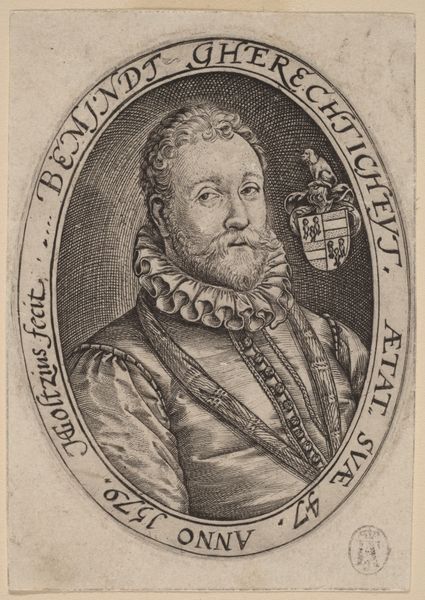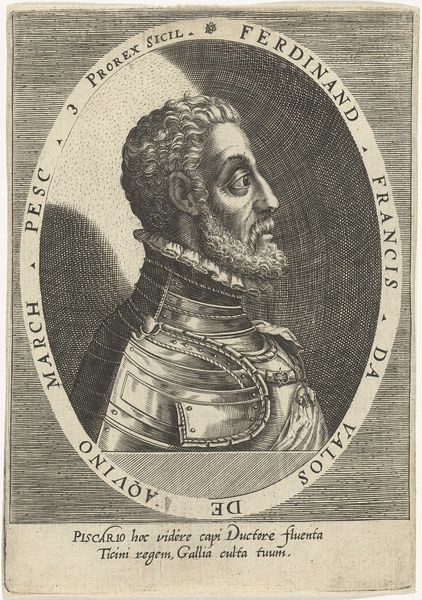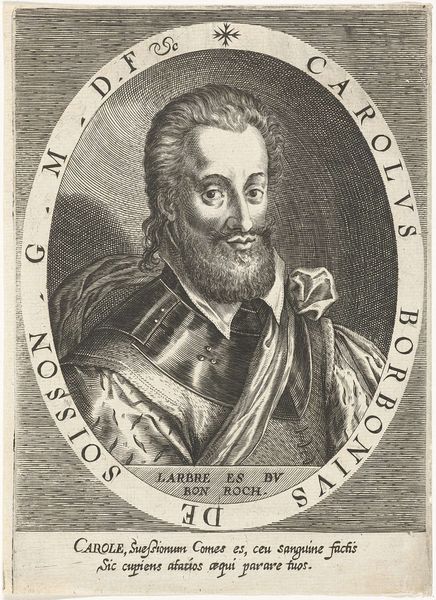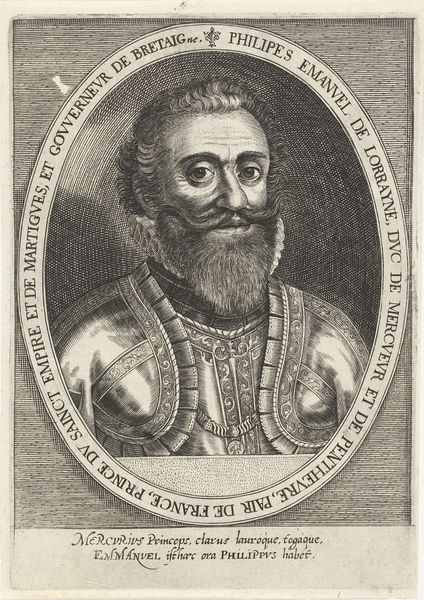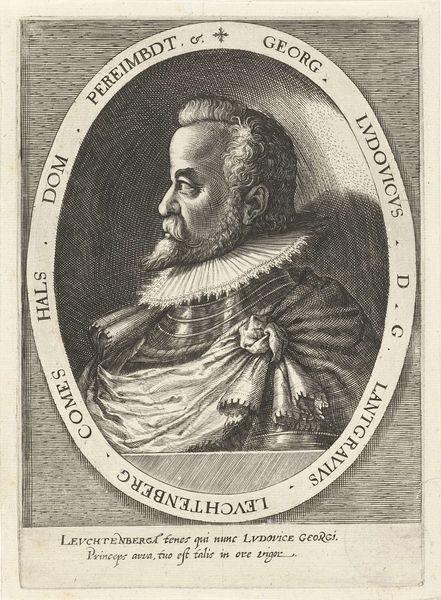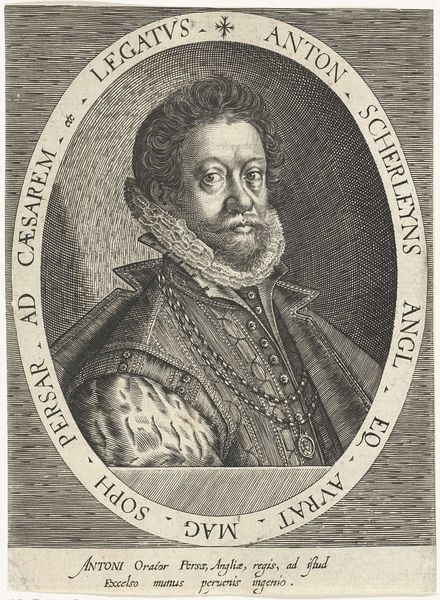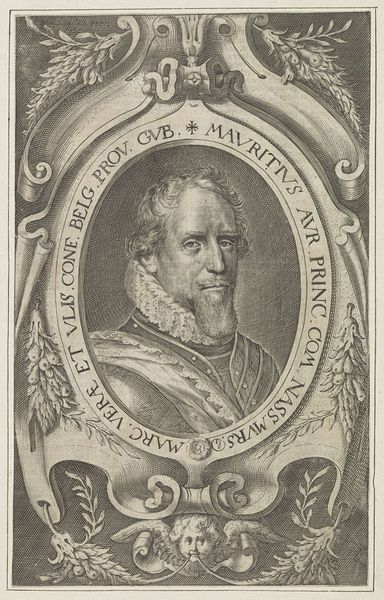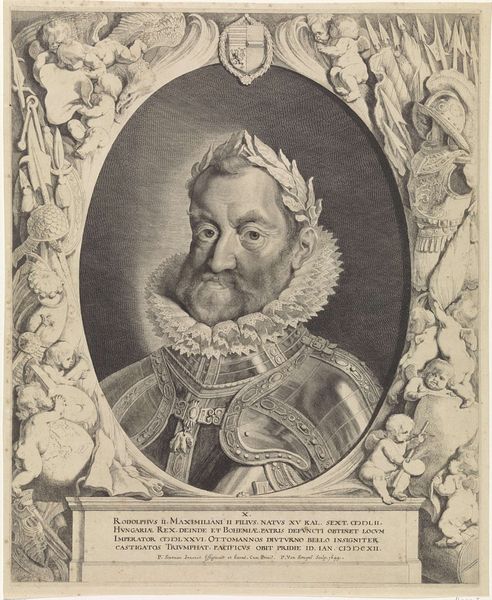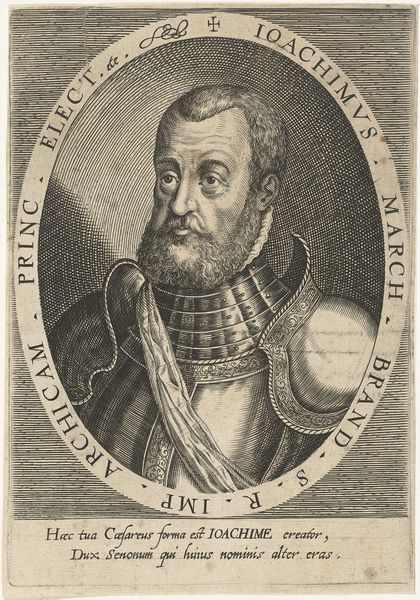
print, engraving
#
portrait
# print
#
mannerism
#
portrait drawing
#
history-painting
#
engraving
Dimensions: height 170 mm, width 125 mm
Copyright: Rijks Museum: Open Domain
Curator: This portrait of Ercole II d’Este, dating from 1600 to 1604, intrigues me. It’s an engraving, a print, by Dominicus Custos and currently resides here at the Rijksmuseum. The intricacies achieved through such a medium always impress. Editor: It does have a severity to it. That sharp profile, the unwavering gaze... there’s a clear intent to project authority. The oval frame enhances that sense of contained power, doesn’t it? Curator: Absolutely. And consider the conditions of production for prints at this time. Engravings weren’t mere reproductions; they were active participants in circulating power, knowledge and the elite’s imagery. Editor: The faces embedded on his armor and cloak, though... It’s unnerving. Are those meant to be allegorical representations of conquered foes, or some classical figures that serve as emblems? Curator: Likely allegorical. Note the level of detail achieved solely through lines, dots and hatching. Custos would have to precisely understand the qualities of the metal plate and the effects of acid etching. These material conditions absolutely dictated what kind of image he could produce. Editor: You know, these images are critical documents of political and social history. Beyond aesthetics, this work provides us with a direct, mediated encounter with the image Ercole II wanted the world to have of him, his constructed persona. Think of where it might have hung, who would have viewed it, the effect that it has upon its viewers and subjects alike. Curator: And further, consider how the proliferation of prints shifted art consumption and broadened access. Engravings weren't luxury items in the way an oil painting was; their very nature expanded viewership. They facilitated access, and shifted tastes through display and collections. Editor: Indeed. We are left contemplating the impact this portrait, as a cultural artifact, once had and what meanings it may now create in this present. Thank you for guiding me through this material and historical exploration! Curator: My pleasure. These dialogues remind me how multi-layered even seemingly straightforward artworks truly are.
Comments
No comments
Be the first to comment and join the conversation on the ultimate creative platform.
